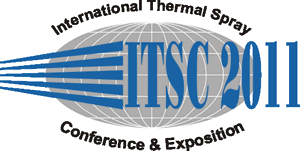
|
2656 |
|
Thermal stability of cold sprayed ceramic particles reinforced metal matrix composite coatings |
|
Chang-Jiu Li / Xi'an Jiaotong University, P.R. China Xiao-Tao Luo / State Key Laboratory for Mechanical Behavior of Materials, Xi'an Jiaotong University, China Guan-Jun Yang/ State Key Laboratory for Mechanical Behavior of Materials, Xi'an Jiaotong University, China Xin-Kun Suo/ State Key Laboratory for Mechanical Behavior of Materials, Xi'an Jiaotong University, China |
|
Spray powder particles experience intensive plastic deformation at a high strain rate due to high velocity impact during cold spraying deposition. High degree of deformation results in the formation of metastable microstructure, such as localized nanocrystalline at the particle/particle interface and the increased high dislocation density. All those effects contribute strengthening or hardening to cold-sprayed metal alloy compared with corresponding annealed bulk materials. However, those metastable microstructures are usually sensitive to temperature. It is necessary to clarify the microstructure stability and temperature tolerance limit of cold sprayed coatings containing metal alloy. In the present work, nanostructured cBN/NiCrAl and polycrystalline diamond (PCD)/NiCrAl composite coatings were deposited by cold spraying using mechanically alloyed composite powders. To examine their thermal stability, the composite coatings were annealed at different temperatures. The microstructure of the annealed composite coatings was characterized by x-ray diffraction (XRD), scanning electron microscopy (SEM) and transition electron microscopy (TEM). The dislocation density and grain size of the coatings annealed at different temperatures were estimated from the XRD data and TEM observations. A multiple strengthening model was introduced to evaluate the role of different strengthening mechanisms to the coating hardness after annealed at different temperatures. The results show that the hardness of PCD/NiCrAl composite coating sharply decreased from ~1120 Hv to ~652 Hv when the annealing temperature was increased from 500 to 700oC. The hardness of cBN/NiCrAl coating approximately kept constant of about 1170 Hv up to the annealing temperature of about 750oC. The XRD and TEM observations indicated that such hardness decrease can be attributed to the recovery, recrystallization and grain growth of the NiCrAl matrix. The estimated hardness values by the multiple strengthening model were comparable with the observed ones. |